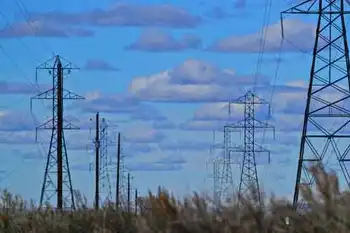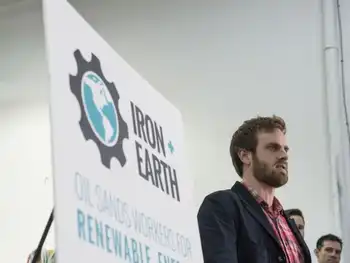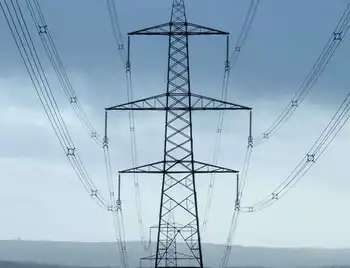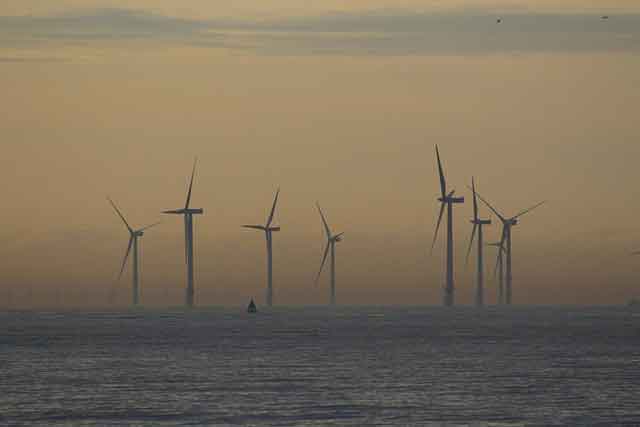EPA proposes new emission standards
By New York Times
Arc Flash Training CSA Z462 - Electrical Safety Essentials
Our customized live online or in‑person group training can be delivered to your staff at your location.

- Live Online
- 6 hours Instructor-led
- Group Training Available
Lisa P. Jackson, the agencyÂ’s administrator, said control of dozens of poisonous substances emitted by power plants was long overdue and would prevent thousands of deaths and tens of thousands of cases of disease a year.
Ms. Jackson pointedly included the head of the American Lung Association and two prominent doctors in her announcement to make the point that the regulations were designed to protect public health and not to penalize the utility industry.
She estimated the total annual cost of compliance at about $10 billion, in line with some industry estimates although some are much higher, and the health and environmental benefits at more than $100 billion a year. She said that households could expect to see their electric bills rise by $3 to $4 a month when the regulation was fully in force after 2015.
Ms. Jackson was acting under a court-ordered deadline to produce a draft rule by March 16.
“Today’s announcement is 20 years in the making and is a significant milestone in the Clean Air Act‘s already unprecedented record of ensuring our children are protected from the damaging effects of toxic air pollution,” she said.
Ms. Jackson said that mercury and the other emissions covered by the rule damaged the nervous systems of fetuses and children, aggravated asthma and caused lifelong health damage for hundreds of thousands of Americans.
She said that installing and maintaining smokestack scrubbers and other control technology would create 31,000 short-term construction jobs and 9,000 permanent utility sector jobs.
Even before the formal unveiling of the rule, some utilities, business groups and Congressional Republicans cast it as the latest salvo in a regulatory war on American industry. They cited a number of recently issued EPA rules, including one on industrial boilers and the first of a series of regulations covering greenhouse gases, which they argue will impose huge costs on businesses and choke off economic recovery.
“EPA admits the pending proposal will cost at least $10 billion, making it one of the most expensive rules in the history of the agency,” a group of utilities, the Electric Reliability Coordinating Council, said in a report. “Adaptation to all the proposed rules constitutes an extraordinary threat to the power sector — particularly the half of U.S. electricity derived from coal-fired generation.”
The group questioned Ms. JacksonÂ’s assertion that the technology needed to reduce emissions of mercury, lead, arsenic, chromium and other airborne pollutants was readily available and reasonably inexpensive. The need to retrofit scores of plants in the same short period of time will tax resources and lead to delays, it said.
A spokesman for the utility industryÂ’s largest trade group, the Edison Electric Institute, said it would be easier for some utilities to comply than others, particularly those that rely more heavily on nuclear power and those that have switched to natural gas for part of their generating capacity.
One utility executive said compliance would not be unduly burdensome.
“We know from experience that constructing this technology can be done in a reasonable time frame, especially with good advance planning,” said Paul Allen, senior vice president and chief environmental officer of Constellation Energy. “And there is meaningful job creation associated with the projects.”
Public health advocates said utilities had delayed the rules for more than two decades with court challenges and lobbying campaigns.
“If you think it’s expensive to put a scrubber on a smokestack, you should see how much it costs to treat a child over a lifetime with a birth defect,” said Dr. O. Marion Burton, president of the American Academy of Pediatrics, who stood with Ms. Jackson in announcing the rule.
Roughly half of the nationÂ’s more than 400 coal-burning plants have some form of control technology installed, and about a third of states have set their own standards for mercury emissions. But the proposed rule is the first national standard and will require all plants to come up to the standard of the cleanest of current plants.
The new rules bring to a close a bitter legal and regulatory battle dating back to the passage of the 1970 Clean Air Act, which first directed the EPA to identify and control major industrial sources of hazardous emissions.
By 1990, however, federal regulators had still not set standards for toxic emissions from power plants, and Congress, in the face of stiff resistance from utilities and coal interests, passed legislation directing the EPA to study the health effects of mercury and other emissions, and to detail the cost and effectiveness of control technologies.
In 1998, the agency finally complied, delivering a comprehensive report to Congress detailing the health impact of numerous pollutants, including mercury, which by then had been linked conclusively in multiple studies to serious cognitive harm to fetuses.
In December 2000, in the last days of the Clinton administration, the EPA finally listed power plants as a source of hazardous air pollutants under the Clean Air Act.
The Bush administration EPA faced its own deadlines to devise and put into effect controls for power plant pollution. But rather than issue emissions standards in line with federal law, in 2005, top agency officials instituted a controversial cap-and-trade program for mercury, despite a warning from agency lawyers that the move would throw the issue back into the courts and almost certainly be reversed.
As predicted, a coalition of states and environmentalists sued the agency, arguing that the cap-and-trade program would not limit other toxic emissions like arsenic and would allow the dirtiest power plants to pay for the right to pollute, putting nearby communities at risk. In 2008 a federal judge ruled against the EPA, giving the agency three years to develop standards for mercury and other pollutants.
The long delay has meant that emissions of some major pollutants have grown in recent years. The EPAÂ’s most recent data shows that from 1999 to 2005, mercury emissions from power plants increased more than 8 percent, to 53 tons from 49 tons. Arsenic emissions grew even more, rising 31 percent, to 210 tons from 160 tons.
The EPA will take public comment on the proposed regulations for the next several months. It anticipates publishing a final rule at the end of this year or early next year. The rule would take effect fully three or four years later.











